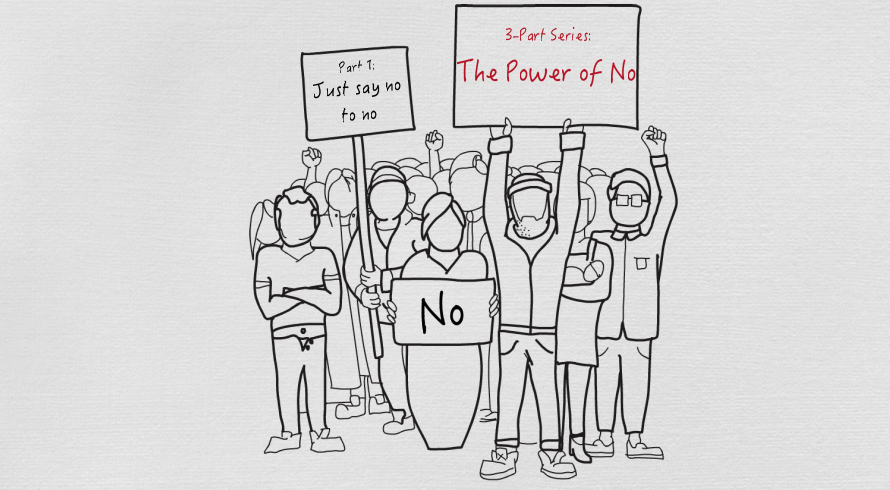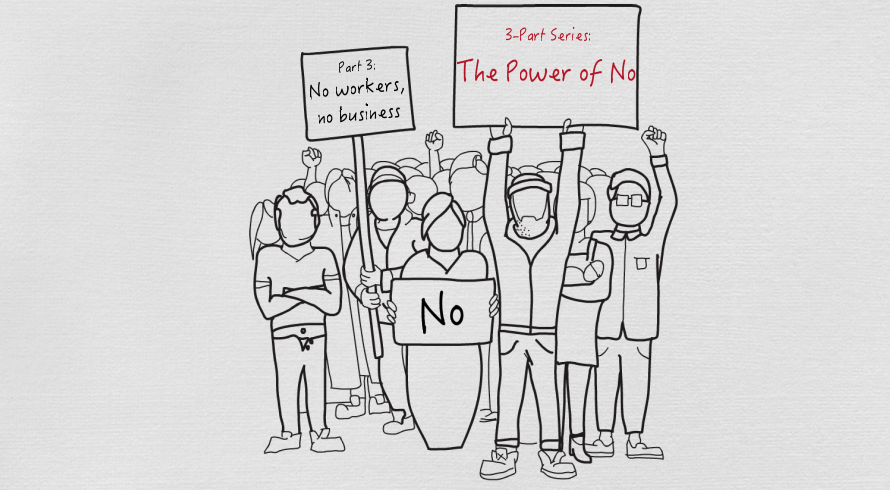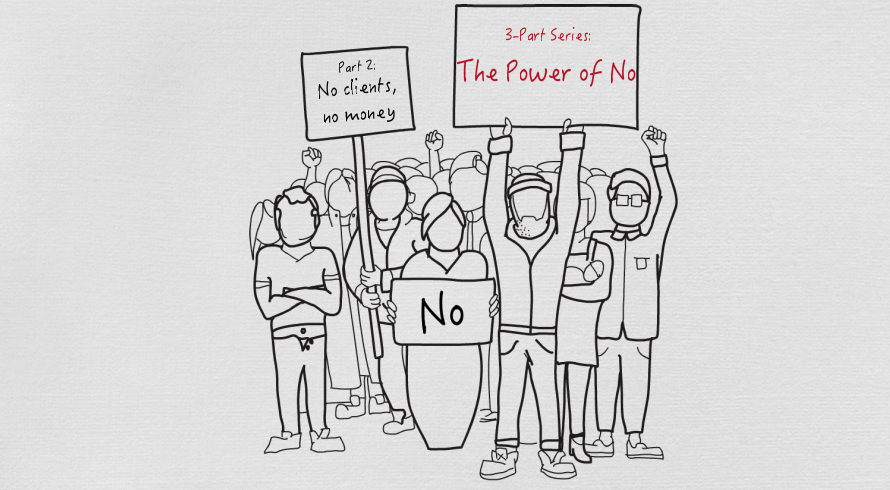
How would you react to this?
If you received a knock on the door from a stranger who said he was “reaching out to touch base”, would you open the door? (creep)
What if a close friend left you a voicemail to “enable you to call me back at your earliest convenience to discuss next steps?” (yawn)
Corporate jargon has become a standard in how we communicate with those whom we spend the most time. Occasional jargon can be acceptable, provided it isn’t overused. Besides, do you find that it helps you forge more genuine relationships in the workplace and beyond? I, personally, want to wash my mouth out with soap when I use jargon. (And I do use it, because I’m not perfect.) It just seems like the harder we try to use esoteric words to “connect” with others, we are really driving them away.
The same applies to writing copy for your marketing materials and advertising headlines. We have a limited time to make a great first impression; after all, humans now have a shorter attention span than gold fish. (It’s true, because I read it on the Internet.)
Walk a mile in their shoes (it’s science!)
(The article is about eliminating corporate jargon, not my favorite clichés that are perfect for to make a point in a blog.)
One of the most effective ways to gauge how something is going to be perceived is to put yourself in the “shoes” of the potential audience and imagine how that person would react if you were the other person, i.e the recipient of your own marketing or sales messages.
This theory is actually rooted in science and psychology. In fact, one of the theories of Neurolingustic programming (also known as NLP) called “Second Position” discusses this exact topic. “Second position” outlines the process of reframing our own point of view by considering a situation from another person’s perspective. You may not have heard of “Second position”, but you likely have worked for a company at one time that had coined a new fancy term for this, as well. Regardless of what you call it, the goal of “Second position” is to offer new insights and understandings of the world around us.
Drop the jargon and be “real”
So how do you incorporate the theory of Second Position and drop the jargon? Here are 10 common phrases of corporate jargon and ideas to replace them in your day to day conversations. In all cases, the preference is to be clear in what you are trying to communicate. If you find alternate words or phrases that are more genuine or natural to you, by all means, use them.
| INSTEAD OF | TRY |
| Reach out/touch base/check-in | Nothing…Please eliminate it all together! |
| Next steps/action Items | Here is what I have on the “to do” list |
| Enable | Help us to, permit us to, authorize us to, make it so that we can… |
| Leverage | Use, refer to, apply X to Y |
| Best practice | Frame of reference (“Here’s what other companies are doing for X”) |
| Move the needle | Improve, be more effective, grow, achieve x results |
| ROI | Goal (“Here is the goal that we have established for ourselves”) |
| Outside of the box | Be different, push our boundaries, challenge ourselves |
| Ecosystem | Infrastucture, system, product group |
| Drill down/deep dive | Critically review or look further, research, consider |
| Take offline/put it on the back burner | Review later (“Let’s set another time to review this topic) |
What’s next?
This month, I’m challenging you to adopt a new year’s resolution to reconsider how you communicate, and think about how the words you choose can help – and hurt you. I’m not talking about emotional pain as in “boo-hoo, find a couch, I have to see a shrink.” I’m talking about your business conversations. After all, don’t we spend 40 hours a week with our loved ones, we spend the majority of our time at work. (To my American readers, we’ll talk about that later.)
Let me know how this resonates with you! I’d love to hear your stories about how you’ve worked to improve your communication.





